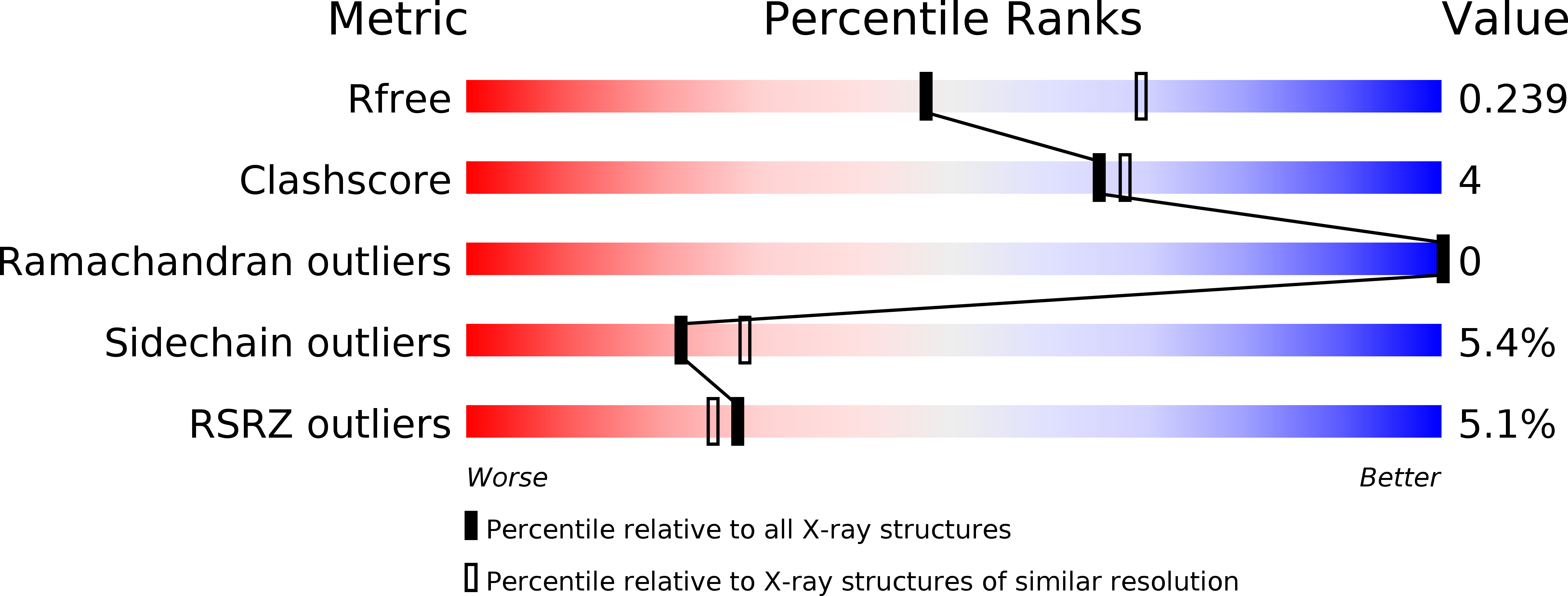
Deposition Date
2017-01-15
Release Date
2017-12-20
Last Version Date
2023-11-22
Entry Detail
PDB ID:
5WYR
Keywords:
Title:
Crystal structure and catalytic mechanism of the essential m1G37 tRNA methyltransferase TrmD from Pseudomonas aeruginosa
Biological Source:
Source Organism:
Pseudomonas aeruginosa (strain UCBPP-PA14) (Taxon ID: 208963)
Host Organism:
Method Details:
Experimental Method:
Resolution:
2.45 Å
R-Value Free:
0.23
R-Value Work:
0.19
R-Value Observed:
0.19
Space Group:
P 32 2 1


